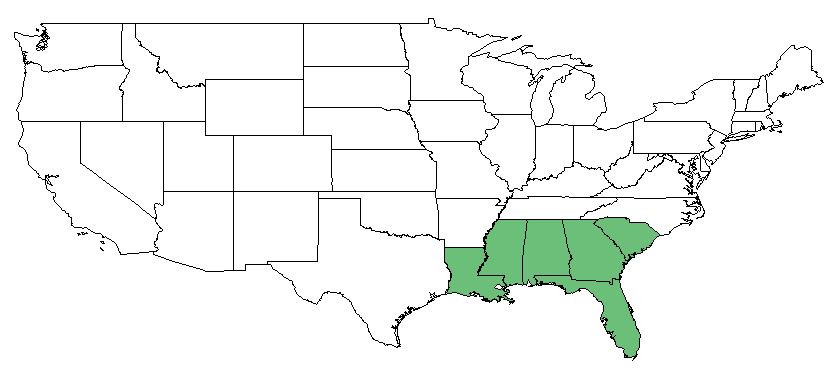Difference between revisions of "Collinsonia punctata"
(→Description) |
|||
| Line 38: | Line 38: | ||
<!--===Fire ecology===--> <!--Fire tolerance, fire dependence, adaptive fire responses--> | <!--===Fire ecology===--> <!--Fire tolerance, fire dependence, adaptive fire responses--> | ||
<!--===Pollination===--> | <!--===Pollination===--> | ||
| − | + | ||
| + | ===Use by animals=== <!--Herbivory, granivory, insect hosting, etc.--> | ||
| + | ''C. serotina'' composes 2-5% of the diet for some terrestrial birds.<ref name="Miller & Miller 1999">Miller JH, Miller KV (1999) Forest plants of the southeast and their wildlife uses. Southern Weed Science Society.</ref> | ||
<!--==Diseases and parasites==--> | <!--==Diseases and parasites==--> | ||
Revision as of 14:26, 15 February 2018
| Collinsonia punctata | |
|---|---|
Error creating thumbnail: Unable to save thumbnail to destination
| |
| Photo by from USDA NRCS Plants Database. | |
| Scientific classification | |
| Kingdom: | Plantae |
| Division: | Magnoliophyta - Flowering plants |
| Class: | Magnoliopsida - Dicots |
| Order: | Lamiales |
| Family: | Lamiaceae |
| Genus: | Collinsonia |
| Species: | C. punctata |
| Binomial name | |
| Collinsonia punctata Walter | |

| |
| Natural range of Collinsonia punctata[1] | |
Common Names: Florida horsebalm;[2] blue ridge horsebalm;[3]
Contents
Taxonomic Notes
Synonym: C. serotina;[2][3] C. canadensis var. punctata; Hypogon verticillata; Micheliella anisata[3]
The taxanomic identification of this species seems highly debated in the literature. Collinsonia punctata is almost identical to Collinsonia anisata except for its different scent and the number of stamen (two).[4][5]
Description
Collinsonia serotina is a dioecious perennial forb/herb.[3]
Distribution
Ecology
Habitat
Use by animals
C. serotina composes 2-5% of the diet for some terrestrial birds.[6]
Conservation and Management
Cultivation and restoration
Photo Gallery
References and notes
- ↑ Weakley, Alan S. 2015. Flora of the Southern and Mid-Atlantic States: Working Draft of 21 May 2015. University of North Carolina, Chapel Hill, North Carolina. 1320 pp.
- ↑ 2.0 2.1 Weakley AS (2015) Flora of the Southern and Mid-Atlantic States. Chapel Hill, NC: University of North Carolina Herbarium.
- ↑ 3.0 3.1 3.2 3.3 USDA NRCS (2016) The PLANTS Database (http://plants.usda.gov, 15 February 2018). National Plant Data Team, Greensboro, NC 27401-4901 USA.
- ↑ Cite error: Invalid
<ref>tag; no text was provided for refs namedSims 1809 - ↑ Ward DB (2014) Thomas Walter typification project, VII: Observations on the genus Collinsonia (Labiatae) and a neotype for C. serotina Walter. Phytoneuron 89:1-5.
- ↑ Miller JH, Miller KV (1999) Forest plants of the southeast and their wildlife uses. Southern Weed Science Society.